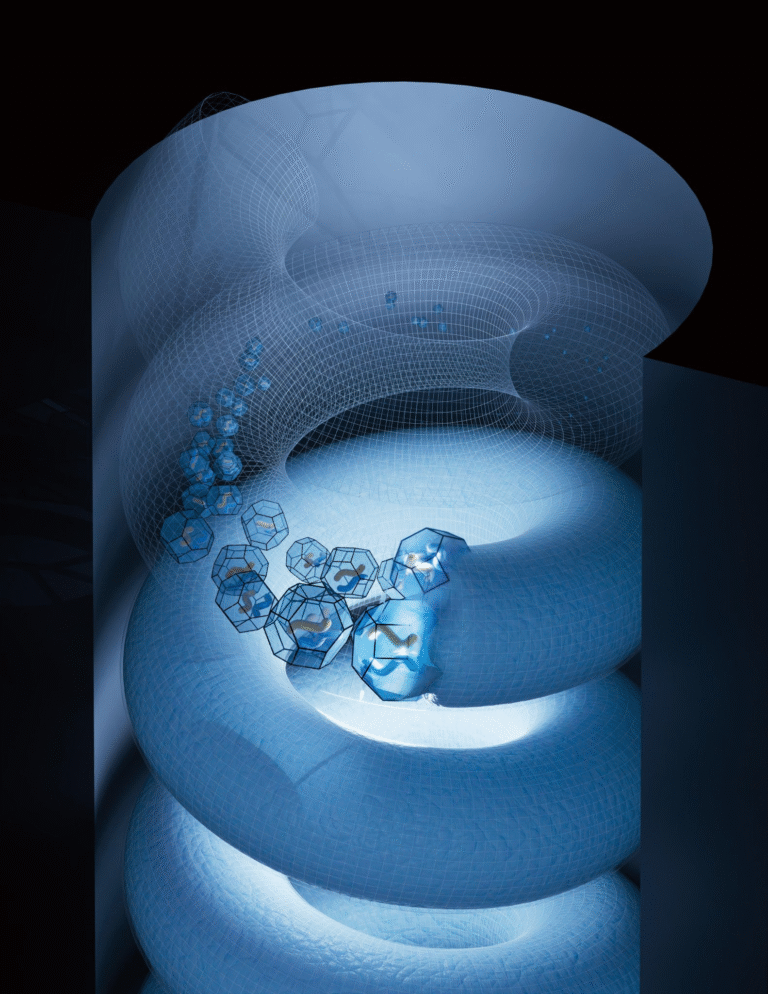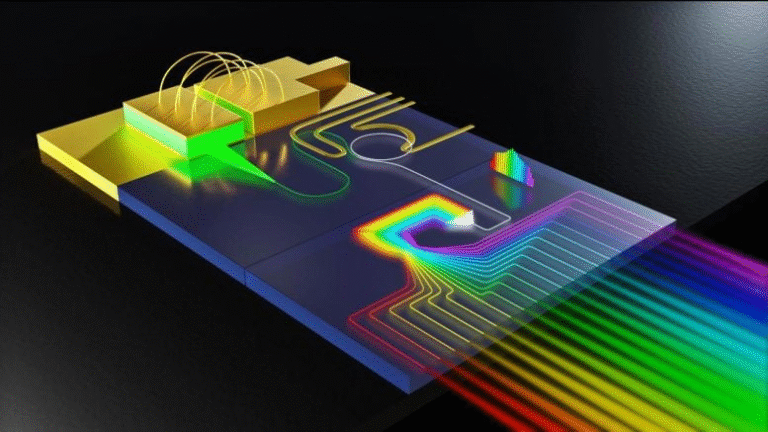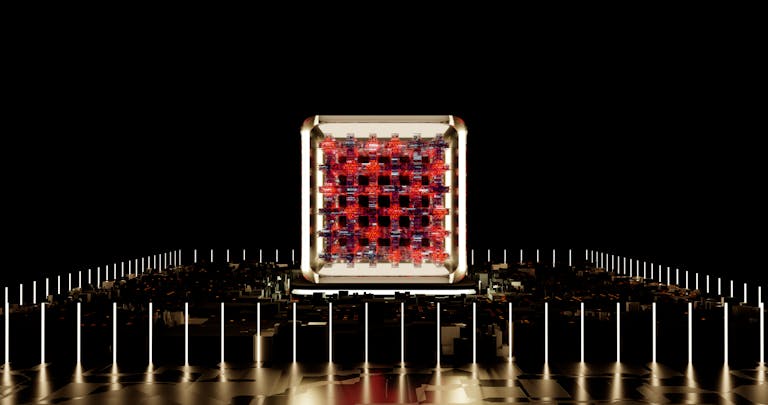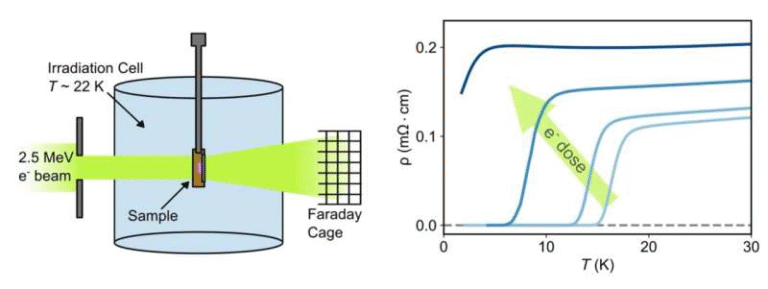Self-Organizing Light: How USC Engineers Built the First Device That Lets Light Route Itself

A team of researchers at the University of Southern California (USC) has taken a major step forward in photonics by creating a device that allows light to guide itself, without needing any external control, switches, or digital processing. This new concept, called optical thermodynamics, could completely transform how data moves through computing systems and communication networks.
The achievement marks the first-ever optical device based on optical thermodynamics, a field that treats light in complex systems as if it follows the same basic rules as gases and heat in traditional thermodynamics. The findings were recently published in Nature Photonics, and they introduce a radically different way to control light—by letting it find its own path naturally.
What Makes This Breakthrough Different
In most photonic and optical systems, light needs to be actively controlled. Engineers use switches, routers, and modulators to make sure light goes where it’s supposed to. These mechanisms are complex, energy-intensive, and limited by electronic speed and efficiency.
The USC team has shown that light doesn’t always need such supervision. By designing a system governed by thermodynamic principles, they’ve created an environment where light organizes its own route—just like how a gas naturally spreads out and then settles into equilibrium.
This approach doesn’t rely on external commands or digital processing. Instead, the system is built so that light evolves naturally, following the same kind of self-balancing processes found in physics.
The result: a photonic device that doesn’t need to be “told” what to do. It figures it out on its own.
The Core Idea: Optical Thermodynamics
The new field of optical thermodynamics was developed to describe how light behaves in nonlinear, multimode systems—that is, optical systems where many light modes (or paths) interact in complex, often chaotic ways.
Traditionally, such systems have been viewed as unpredictable. Because multiple modes interfere and couple in nonlinear ways, controlling or even simulating them has been extremely difficult.
But the USC researchers noticed something intriguing: when light propagates through these systems, its collective behavior resembles how molecules in a gas reach thermal equilibrium.
They developed a mathematical and physical framework describing how light’s properties—its energy distribution, intensity, and direction—follow laws similar to temperature, entropy, and phase transitions in thermodynamics.
In other words, light can “cool,” “expand,” and “settle” in a way that mimics how matter behaves in traditional thermodynamic systems.
How the Device Works
The USC team’s demonstration, which appeared in Nature Photonics under the title Universal Routing of Light via Optical Thermodynamics, shows how this idea can be realized in an actual device.
The device operates in a nonlinear time-synthetic mesh lattice—a structure built using loops of optical fiber and other photonic components. Think of it as an artificial environment where light can take different paths, interact, and evolve over time.
When light enters the system, it undergoes a two-step process that mirrors the behavior of gases in thermodynamics:
- Optical Expansion: At first, the light spreads throughout the system, similar to how gas expands in a chamber. This spreading helps redistribute the light’s intensity and energy, lowering what the researchers call its “optical temperature.”
- Thermalization (Equilibrium): After expansion, the light’s energy naturally redistributes among the available modes, just like molecules in a gas settling into equilibrium. This process causes the light to self-organize and eventually concentrate into a single ground state, which corresponds to a specific output path.
This behavior means that no matter where you launch light into the device, it will always find its way to the correct output channel. It’s a bit like dropping a marble into a maze that reorganizes itself so that the marble always ends up in the right hole—no manual steering required.
The researchers compared the mechanism to the Joule–Thomson expansion in thermodynamics, a process where a gas expands, cools, and redistributes its energy before reaching equilibrium.
The Team Behind the Work
The study was led by Hediyeh M. Dinani, a PhD student in the Optics and Photonics Group at USC Viterbi, under the supervision of Prof. Demetrios N. Christodoulides and Prof. Mercedeh Khajavikhan.
Other contributors include Georgios G. Pyrialakos, Abraham M. Berman Bradley, Monika Monika, Huizhong Ren, Mahmoud A. Selim, and Ulf Peschel.
The research was supported by the U.S. Army Research Office and the U.S. Department of Energy, and represents a collaboration between USC’s Ming Hsieh Department of Electrical and Computer Engineering and international partners in Germany.
Why It’s Important
The implications of this discovery go far beyond a single experiment.
As electronic systems reach their physical and thermal limits, researchers around the world have been looking toward optical computing and photonic interconnects as a way to handle data faster and more efficiently.
In current systems, data is transmitted using electrons in circuits. But light can carry information at far higher speeds, with far less energy loss. The challenge has always been controlling it precisely—routing optical signals from one point to another without introducing complexity or instability.
The new thermodynamic approach could make optical systems simpler, faster, and more robust by eliminating the need for constant electronic intervention.
Instead of engineers programming light pathways through switches or modulators, the physics does the work.
This could eventually lead to breakthroughs in:
- High-performance computing (especially for AI workloads that need massive data movement).
- Telecommunications, where light-based routing could simplify the backbone of global data networks.
- Secure data transmission, since self-organizing light patterns could have unique, stable characteristics difficult to intercept or tamper with.
- Fundamental research, enabling scientists to explore the physics of complex nonlinear systems in entirely new ways.
From Chaos to Control
Nonlinear optical systems have always been known for their chaotic, hard-to-predict behavior. Because of that, engineers have often tried to avoid them or simplify them.
What makes this work revolutionary is that it flips that logic. Instead of avoiding complexity, it embraces it.
The USC device doesn’t try to suppress the chaos—it uses it. The nonlinear interactions and mode couplings naturally lead to self-organization, just as random molecular motion in a gas leads to predictable thermodynamic properties.
This idea opens up a new class of self-stabilizing photonic devices that could handle complex operations with minimal human control.
Technical and Practical Challenges
While this demonstration is groundbreaking, it’s still at an early stage. The experiment was conducted in a carefully controlled fiber-based lattice, which is not yet suitable for compact commercial use.
To make this technology practical, scientists will need to:
- Miniaturize the system onto photonic chips.
- Reduce power requirements so that nonlinear effects occur at lower light intensities.
- Maintain stability across environmental variations (temperature, vibration, etc.).
- Scale the routing logic so that multiple output channels can coexist and be selected dynamically.
Still, the underlying physics is sound, and the proof-of-concept shows enormous promise. If future devices can integrate this kind of self-organizing light behavior at chip scale, it could represent a paradigm shift in how optical communication and computing systems are designed.
Understanding Nonlinear Multimode Systems
To better appreciate this breakthrough, it helps to understand why nonlinear multimode systems are so challenging—and why solving them matters.
In a linear optical system, light waves pass through materials without changing each other’s properties. You can easily predict how light will behave by adding up the waves mathematically.
In nonlinear systems, light waves interact. Their energy, phase, and direction can influence one another, creating new frequencies or redistributing energy among different modes.
A multimode system means there are multiple possible light paths or resonant states—essentially, many ways the light can exist inside the device.
When you combine nonlinearity and multimode behavior, things get complicated fast. The equations become so intricate that even powerful computers struggle to simulate them.
But, as this research shows, such systems also hold untapped potential. They can display emergent behaviors—self-organization, pattern formation, or even light condensation—that could be harnessed for useful functions like signal routing, energy focusing, or beam shaping.
Why Optical Thermodynamics Could Be a Big Deal
If optical thermodynamics continues to develop, it could serve as the foundation for a new generation of photonic devices that are not only faster and more efficient but also self-regulating.
It provides a way to describe and predict complex light behavior using the same powerful framework that physicists have used for centuries to describe gases, heat, and energy systems.
This framework introduces concepts such as optical temperature, optical chemical potential, and optical entropy, helping engineers design devices that use these principles to achieve stable, predictable outcomes in otherwise chaotic systems.
In a way, it brings nature’s self-balancing mechanisms into the world of technology—where instead of imposing strict control, we let the system find equilibrium on its own.
A Step Toward the Future of Photonics
The USC team’s achievement is not just another photonics experiment—it’s a redefinition of how engineers might approach the control of light in the coming decades.
If electronic systems were defined by binary switches and logic gates, optical thermodynamics hints at a future defined by self-organizing principles, where light does what it naturally wants to do—only inside a system cleverly designed to use that behavior productively.
The discovery shows that even in the most complex and nonlinear environments, order can emerge naturally. And that realization could lead to a completely new generation of technologies that blend the boundaries between physics and engineering.
Reference:
Universal Routing of Light via Optical Thermodynamics – Nature Photonics (2025)





